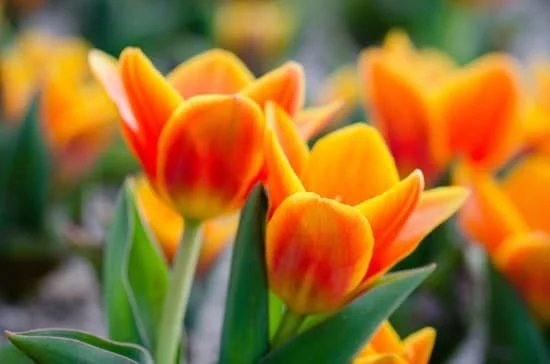Are you interested in starting your own vegetable garden but don’t have a lot of space or resources? If so, you’re in the right place. In this article, we will explore cheap container vegetable gardening ideas that are perfect for those with limited space and a tight budget.
Container gardening offers an accessible and cost-effective way to grow your own vegetables, even if you don’t have a traditional garden plot. Whether you live in an apartment or simply want to make the most of your outdoor space, container gardening can be a practical and rewarding option.
One of the main benefits of container vegetable gardening is that it allows you to maximize whatever space you have available. Even if you only have a small balcony, patio, or windowsill, you can still grow a variety of vegetables in containers. Additionally, container gardening is beginner-friendly and requires minimal maintenance compared to traditional gardens. With the right guidance and creative ideas, anyone can start their own container vegetable garden regardless of their level of experience.
In the following sections, we will provide tips on selecting the right containers for your garden, creating a healthy growing environment with soil and fertilizer, selecting the best vegetables for container gardening, and exploring creative and cheap container ideas through upcycling and DIY solutions. We will also cover watering and maintenance tips, maximizing space with vertical gardening techniques, and enjoying the fruits of your labor through harvesting your homegrown vegetables.
So let’s dive in and discover the endless possibilities of affordable and accessible container vegetable gardening ideas.
Getting Started
When it comes to cheap container vegetable gardening ideas, one of the most important aspects to consider is selecting the right containers for your garden. The good news is that you don’t have to spend a lot of money to get started – there are plenty of affordable options available.
Types of Containers
When it comes to selecting containers for your vegetable garden, there are a variety of options to choose from. Traditional clay or plastic pots are widely available and can be purchased at budget-friendly prices. Additionally, you can also consider using recycled materials such as old buckets, wooden crates, or even re-purposed household items like milk jugs or yogurt containers.
Size and Drainage
Regardless of the type of container you choose, it’s important to ensure that it has adequate drainage holes to prevent waterlogging. Additionally, consider the size of the container in relation to the vegetables you plan to grow – larger plants like tomatoes or peppers will require larger containers, while smaller herbs and salad greens can thrive in smaller pots.
Vertical Gardening Options
For those with limited space or a desire for more creative options, vertical gardening can be an excellent choice for cheap container vegetable gardening ideas. Using hanging planters, wall-mounted shelves, or repurposed pallets, you can create a vertical garden that not only saves space but also adds a unique aesthetic to your outdoor or indoor space.
By considering these tips for selecting the right containers for your vegetable garden, you can start your cheap container vegetable gardening journey without breaking the bank. With a bit of creativity and resourcefulness, you can find affordable and effective solutions for growing your own fresh produce in containers.
Soil and Fertilizer
When it comes to container vegetable gardening, creating the right soil and fertilizer environment is crucial for the success of your plants. With the right tips and techniques, you can ensure that your vegetables have everything they need to thrive in their containers.
Choosing the Right Soil
One of the most important aspects of container vegetable gardening is choosing the right soil. Look for high-quality potting mix that is specifically formulated for container gardening. Avoid using regular garden soil, as it tends to compact in containers and may not provide adequate drainage for your plants. Additionally, consider adding perlite or vermiculite to improve aeration and drainage.
Fertilizing Your Plants
In addition to using quality soil, it’s essential to fertilize your container vegetables regularly. Choose a balanced, slow-release fertilizer that will provide your plants with a steady supply of nutrients throughout the growing season. Be sure to follow the instructions on the fertilizer label and avoid over-fertilizing, as this can lead to nutrient imbalances and damage your plants.
Organic Options
For those looking for cheap container vegetable gardening ideas, consider making your own organic fertilizer at home. Compost tea, made from composted kitchen scraps and other organic materials, can be a great way to nourish your container vegetables without breaking the bank. Additionally, you can use natural amendments like fish emulsion or seaweed extract to provide essential nutrients to your plants in an eco-friendly way.
By focusing on soil quality and proper fertilization techniques, you can create a healthy growing environment for your container vegetables, leading to a bountiful harvest at an affordable cost.
Selecting the Best Vegetables for Container Gardening
When it comes to selecting the best vegetables for your container garden, it’s important to choose varieties that not only thrive in a confined space but also provide a bountiful harvest. One of the top choices for cheap container vegetable gardening ideas is tomatoes. Whether you opt for cherry tomatoes or larger heirloom varieties, these plants can easily be grown in containers and will produce an abundance of fresh, flavorful fruits throughout the growing season.
Another excellent option for container gardening is peppers. Both bell peppers and hot peppers can be successfully grown in pots or hanging baskets, making them a versatile choice for small-space gardening. With the right care and attention, pepper plants can yield a plentiful harvest that will add a pop of color and flavor to your meals.
For those looking to add some greenery to their container garden, leafy greens such as lettuce, spinach, and kale are ideal choices. These vegetables are well-suited for growing in smaller containers and can be continuously harvested by simply picking individual leaves as needed. Plus, they are packed with essential nutrients and are relatively low-maintenance, making them perfect for beginner gardeners.
By selecting the best vegetables for container gardening, you can enjoy a diverse and abundant harvest from your limited space without breaking the bank. With careful planning and consideration of your personal preferences, you can create a thriving container garden filled with an array of delicious and nutritious produce.
Creative Container Ideas
When it comes to container vegetable gardening, one of the most appealing aspects is the ability to get creative with your containers. Not only does this allow for a personalized touch to your garden, but it can also be an affordable and sustainable option. Here are some cheap container vegetable gardening ideas that can inspire you to think outside the box:
- Upcycling: Look around your home for items that can be repurposed as planters, such as old buckets, tin cans, or even wooden crates. Not only does this give new life to these items, but it also saves you money on purchasing traditional planters.
- DIY Solutions: Get crafty and make your own containers for your vegetable garden. For example, you can create planters out of recycled plastic bottles or construct raised beds using inexpensive materials like reclaimed wood or cinder blocks.
- Vertical Gardening: Utilize vertical space by repurposing items like shoe organizers, pallets, or gutters to create a vertical garden. This not only maximizes space but also adds a unique visual element to your garden.
By thinking creatively and embracing upcycling and DIY solutions, you can save money while adding personality and character to your container vegetable garden. Plus, the satisfaction of knowing you’ve created something functional and beautiful from materials that might have otherwise been discarded is truly rewarding.
Tips for Watering and Maintenance of Container Vegetables
Container vegetable gardening can be a rewarding and fulfilling way to grow your own fresh produce, even if you have limited space or resources. Once you have selected the perfect containers for your garden and filled them with nutrient-rich soil, it’s important to establish a routine for watering and maintenance to ensure the health and productivity of your plants. Here are some tips to help you keep your container vegetables thriving:
- Watering: One of the most critical aspects of container vegetable gardening is ensuring that your plants receive an adequate amount of water. Since containers can dry out more quickly than traditional garden beds, it’s essential to check the moisture level of the soil regularly. Water your plants deeply, making sure that the water reaches the roots, but be careful not to overwater, as this can lead to root rot.
- Monitoring for pests and disease: In a confined space like a container, pests and diseases can spread quickly and wreak havoc on your plants. Inspect your vegetables regularly for signs of pests or disease, such as yellowing leaves or unusual spots. If you notice any issues, take immediate action to mitigate the problem before it spreads.
- Fertilizing: Container-grown vegetables may require more frequent fertilization than those grown in traditional garden beds, as nutrients leach out of the soil more rapidly in containers. Consider using a slow-release fertilizer or organic compost to replenish nutrients throughout the growing season.
By incorporating these tips into your routine, you can promote healthy growth and bountiful harvests from your container vegetables without breaking the bank.
Maximizing Space
When it comes to cheap container vegetable gardening ideas, maximizing space is essential for those with limited outdoor room. One way to make the most of your space is through vertical gardening and compact layouts. Vertical gardening involves using structures like trellises, hanging baskets, or wall-mounted planters to grow vegetables upwards rather than outwards. This allows you to take advantage of unused vertical space in your garden or on your balcony.
Another option for maximizing space in container vegetable gardening is to utilize compact layouts. This involves strategically arranging your containers in a way that maximizes the use of available space while still providing adequate light and airflow for each plant. For example, you can place taller plants like tomatoes or peppers at the back of a sunny area and line up shorter plants like lettuce and herbs in front of them.
In addition to vertical gardening and compact layouts, another way to maximize space in container vegetable gardening is to consider companion planting. By strategically planting compatible vegetables together in the same container, you can make the most of every inch of space while also benefiting from natural pest control and improved growth for your plants. With these creative strategies, anyone can create a productive and thriving container garden even in a small area.
Harvesting and Enjoying the Fruits of Your Labor
Once your container vegetable garden has flourished and your plants have produced a bountiful harvest, it’s time to enjoy the fruits of your labor. One of the biggest benefits of container gardening is being able to enjoy fresh, homegrown produce right at your fingertips. Whether you’ve grown tomatoes, peppers, herbs, or leafy greens, there’s nothing quite like the satisfaction of picking and enjoying food that you’ve cultivated yourself.
Harvesting your vegetables at the right time is crucial for ensuring optimal flavor and texture. For example, tomatoes should be picked when they are fully ripe but still firm, while leafy greens are best harvested when they’re young and tender. Be sure to do some research on each type of vegetable you’ve planted to know when it’s at its peak for harvesting.
Once you’ve harvested your vegetables, it’s time to put them to good use in the kitchen. From simple salads and stir-fries to homemade pasta sauces and salsas, the culinary possibilities are endless when it comes to using your homegrown produce.
Not only will you save money on groceries by growing your own vegetables, but you’ll also have the peace of mind knowing that they’re free from pesticides and other harmful chemicals often found in store-bought produce. After all, there’s nothing quite like the taste of a freshly-picked tomato or basil straight from your own garden.
Conclusion
In conclusion, container vegetable gardening offers countless benefits, including the ability to grow your own produce in a limited space and on a budget. With the right containers, soil, and selection of vegetables, anyone can enjoy the rewards of a bountiful garden regardless of their living situation. By embracing cheap container vegetable gardening ideas, individuals can access an affordable and sustainable way to incorporate fresh and healthy produce into their diets.
One of the key advantages of container gardening is its accessibility. Whether you have a small balcony, patio, or even just a sunny windowsill, there are creative and inexpensive ways to grow your own vegetables. From upcycling old buckets or crates to creating DIY planters from household items, the possibilities for cheap container vegetable gardening ideas are endless.
By maximizing the use of vertical space and compact layouts, even those with limited outdoor areas can cultivate their own mini gardens. This not only provides fresh produce but also adds beauty and vibrancy to any living space. The satisfaction that comes from harvesting and enjoying the fruits of your labor makes all the effort put into container vegetable gardening truly worthwhile. So why not give it a try and start your very own affordable and accessible garden today?

Welcome to my gardening blog! I am passionate about plants and enjoy sharing my knowledge and experiences with others. In this blog, I will write about everything related to gardening, from tips on how to get started to updates on my own garden projects.





